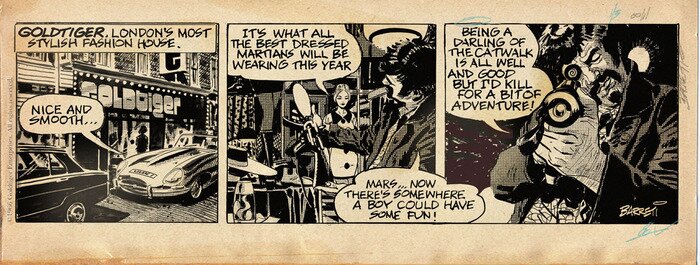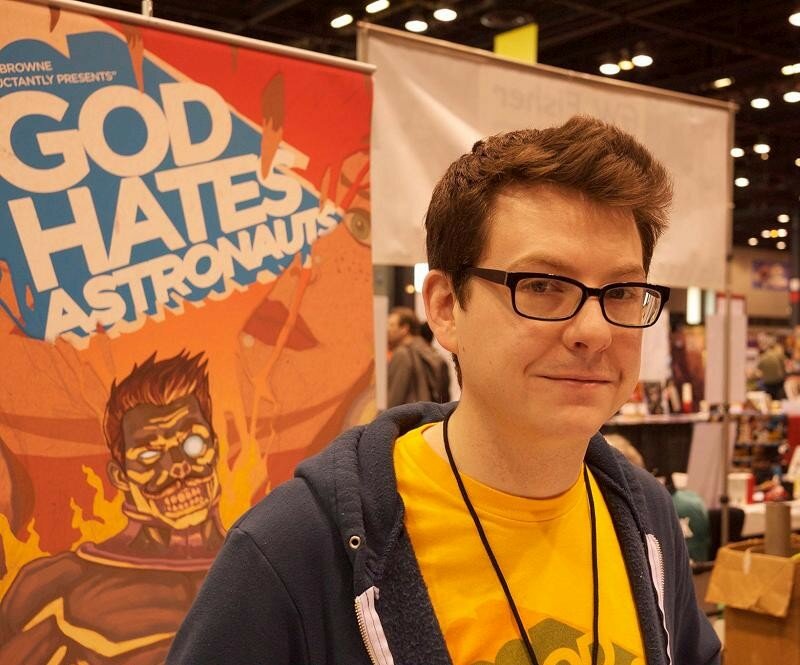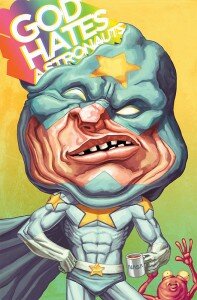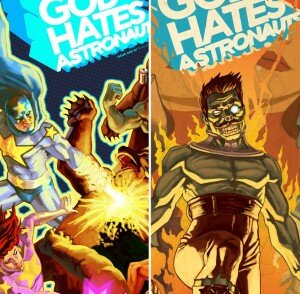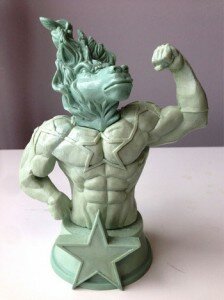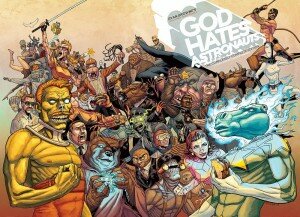Ryan Colucci is a multi-talented sports-film-animation-comics guy working from the US and on apropos of his R.E.M. Kickstarter with artist Zsombor Huszka I did an online interview with him.
Milán Kovács (Comic Conventions): Now let’s see how he describes his own way into comics and everything else:
Ryan Colucci: I went to school to play lacrosse, not for a real career in anything… studying Accounting at Villanova. I spent a year overseas studying Economics and Political Science at Cambridge University – and when I came back I knew I was destined for other things. I transferred to Hofstra University to study Film – but I was still playing lacrosse after graduation and then I got accepted to the Peter Stark Producing MFA Program at USC, which was really the turning point in my life. I knew no one in the film or publishing industries, so it was there I met classmates I would later work with – when I graduated I helped launch Snoot Entertainment. Our first project out of the gate was Battle for Terra: 3D and we actually built our own animation studio from scratch in Los Angeles. While at Stark I started to beat down the doors trying to get the rights to Terry Brooks’ Shannara series, which took years of prodding, but finally happened. It was there I also met classmate Dikran Ornekian, the co-writer of my first book, Harbor Moon.
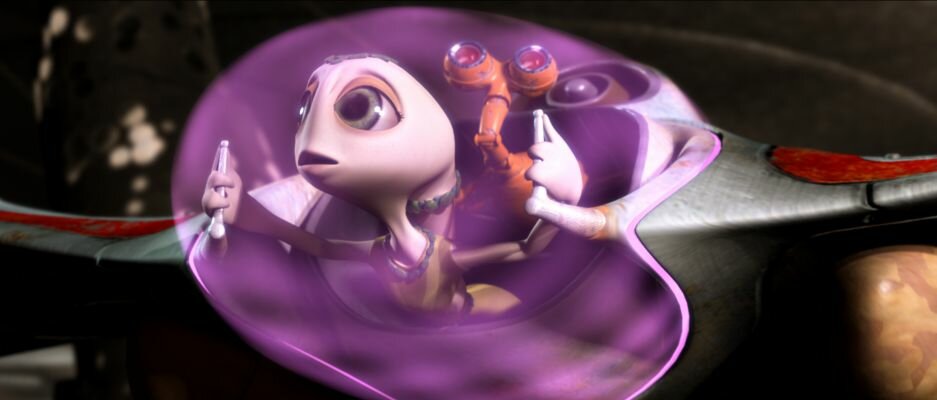
Battle for Terra
Can you tell us something about your previous project, Harbor Moon? What was the public reception like?
Financed independently as well, Harbor Moon is a werewolf spaghetti western. I co-wrote it and oversaw the entire book. It debuted in April of 2011. It was nominated for a Goodreads and Horror Comic Award for Best Original Graphic Novel, as well as some individual blog awards. I really worked my tail off on getting the word out – and was able to get over 60 reviews for the book. The very large majority were all very good, if not glowing. It was scary when it first went out, but things turned out pretty well.
R.E.M. is almost 180 pages your previous comic work is also a graphic novel. What do you like in working with the graphic novel format as opposed to monthly published serialized comics?
Although I grew up reading monthly comics, I come from a film background. So, my stories tend to play out over the length of a movie – which just seems to fit the graphic novel format better. Harbor Moon exists as issues digitally though. In fact, all of the projects I’m working on will exist digitally as issues as well as the full books – except for R.E.M. It’s just not something that plays out in small chunks.
And, to be honest, a large part of it is economically driven. It’s not cheap to make a graphic novel, but it’s a lot cheaper than producing a monthly book. I wouldn’t be able to afford to tell a story over a long period of time. It’s just the reality of my financial situation right now.

R.E.M. Kickstarter
I asked the artist of the book, Zsombor Huszka from Hungary about this subject too. But since you’re the one responsible for it, please tell me how R.E.M. (Rapid Eye Movement) came as a title? Did you meet the question what do you do for the band R.E.M a lot of times? Was it intentional to use this medical and scientifical expression to set the mood for the comic?
The project comes from my own research into a sleep chair/chamber, just like in the book. The runner-up title idea for the book was Soma, which is the name of the chair itself… But R.E.M. felt right. Once you read it, you will see that it fits pretty easily.
Having done a marathon-like 2-hour interview with the artist of the book, I can fairly say I know a lot of things about him which I can’t yet say about you.
I’m somewhat shy, but I am an open book… so if I leave anything out – just ask.
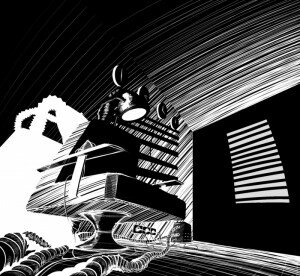
Soma chair from R.E.M.
Please tell us a bit about your sleep chamber experiences. I myself had experiences of sleep deprivation and my ears were very prone to high-pitched sounds.
The inspiration for R.E.M. came from my own research into sleep. Ever since I was a child, I have always hated going to sleep. I couldn’t understand why we were wasting these hours that we could be doing other, fun things. It really manifested itself when I was in college, because I struggled with bouts of insomnia, something I never really told to anyone. Sometimes I would go days without rest, through the sports and the weight lifting and rigorous course load, knowing that ultimately the fall from that will be epic. And it was. I wouldn’t call it severe sleep deprivation and heightened senses… It was more about having zero energy and being tired. I hate that feeling.
The Kickstarter seems to be going well and the campaign is already funded. Do you consider it to be a success or is it just a jump-start?
So far so good. I can’t say enough about the Kickstarter community. They’ve been great, and the messages I’ve been receiving have made it all worthwhile.
The campaign is for printing costs. Kickstarter is all or nothing. I needed to set a goal that made sense. The other costs were already spent, but printing was something I just couldn’t afford. So I’m beyond thrilled we even that mark. I had my doubts leading up to the start (I spent a lot of time preparing for it), but we were able to hit our stated goal in ten days. But to put it in perspective, the book itself (without printing) cost just over $20,000.
Is the Kickstarter a success? Absolutely. More than I could have ever hoped. But this is hopefully just the beginning. And what is more important to me is that those that get it on Kickstarter like what they are reading.
Regarding the Kickstarter campaign I see a lot of interesting pledge levels and rewards. One that caught my eye was also your idea as I found out from Zsombor, I’m talking about the custom-made online avatars. There are a lot of other interesting ones but this one is something new for me. How did you conceive these and did you think them out all alone or do you have some team help?
I worked really hard on the campaign. Coming up with the rewards/campaign was me, but I had to run everything by Karol Wisniewski and Zsombor. Because I wanted them to think they were good ideas – and I also can’t offer something like an avatar by Zsombor if he doesn’t want to draw it. We had a lot more rewards, but I cut them down.

R.E.M. Trailer
The Kickstarter video is also your creation and since you work as a film producer and you have a production company I was wondering if you deliberately mashed comics and animation and film together or was it only a lucky “Frankenstein’s monster experiment”?
This is what I do. I wanted the trailer to feel more like a live action feature – because I wanted to reach the audience that doesn’t normally read comics/graphic novels. Zsombor and I worked really hard on the trailer, so hopefully everyone loves it (okay, they can like it too).
What’s after R.E.M. and how do you see the future of your comics and independent comics in general?
I’m actually hard at work on my next book with Zsombor, called Chasing Rabbits. It is a gritty detective story about the hunt for a serial killer in the gothic city of Wonderland, inspired by Lewis Carroll’s books. It is more akin to Silence of the Lambs and Seven than anything else. Also being done right now is a book that is almost finished that is totally out of left field for me – a young adult comic called Bulderlyns about two mythical creatures, one that wreaks havoc on a town and the other one that must stop it. It is somewhat dark, in the vein of Gremlins.
In less than 10 days from the available 30 you achieved your main goal on Kickstarter and you’re going into “overtime” and heading towards the stretch goals. I know it isn’t over yet but I think a lot of people would like to know about your crowdfunding experiences.
It’s been overwhelming. I can’t say enough about the Kickstarter community. They’ve been great, and the messages I’ve been receiving has made it all worthwhile.
Do you regard this type of fundraising as sound? Would you suggest indie comic writers and artists to use this resource? Do you have some advices for Kickstarter-wannabes?
Put out the best book as possible – and don’t just expect people to find you. You need to work really hard, not just on the content of the book, but on the campaign itself. I’m very much a wannabe myself so I shouldn’t give out too much advice.
Is there anything else I didn’t ask about you’d like to tell us?
If you enjoy a challenging story, I hope you’ll check us out – but I think there is something in the book if you are looking for a different type of love story as well.
Anyone can read the first 30 pages on the R.E.M. website… so give it a shot. That’s all we ask. You can actually check out a prequel of the story as a short film on the website as well. And let me know what you all think – the email on the website goes directly to me. I promise I read and respond to everything sent my way. Including questions about getting your own book off the ground… I’m not a superstar, but I have been down this road twice now and have two more books in production right now.
And if you like what you see and want to know what else is coming from us, follow us on Faceboook or on Twitter.
Thanks so much for this interview!
Thank you for answering my questions, Ryan!
As I concluded the interview I just realized Ryan is going to tattoo this illustration from the book on his leg. This was the $10.000 stretch goal so keep pledging till the $35.000 mark and let’s see how his back will look like after that!
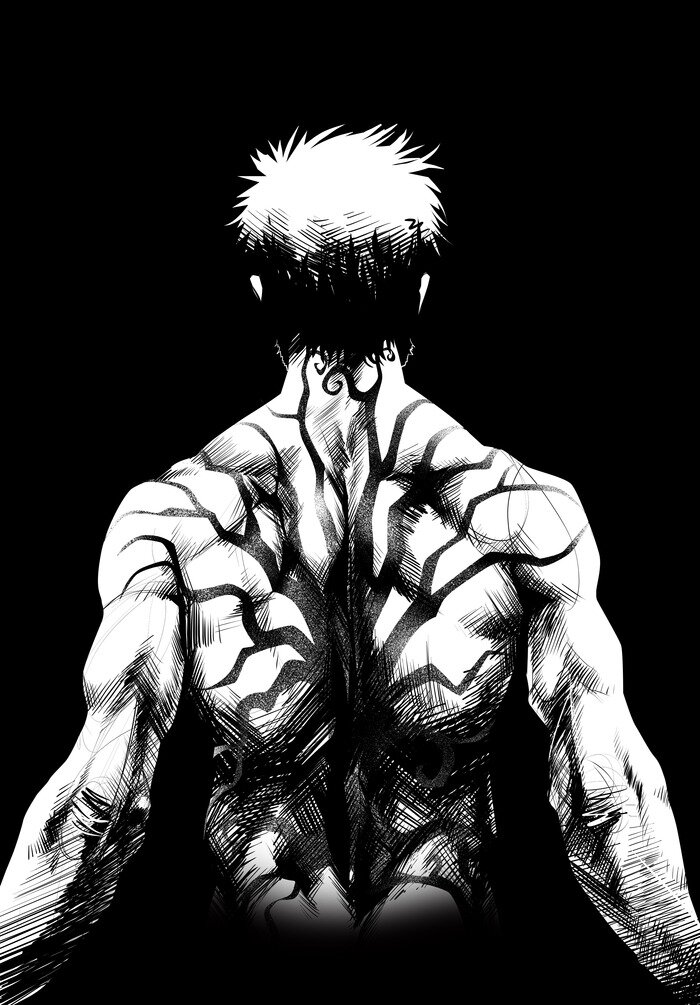
R.E.M. – Tree of Life


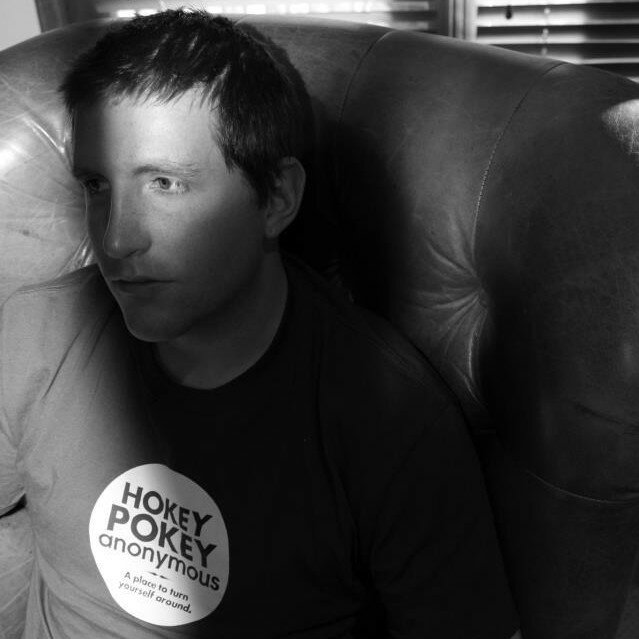

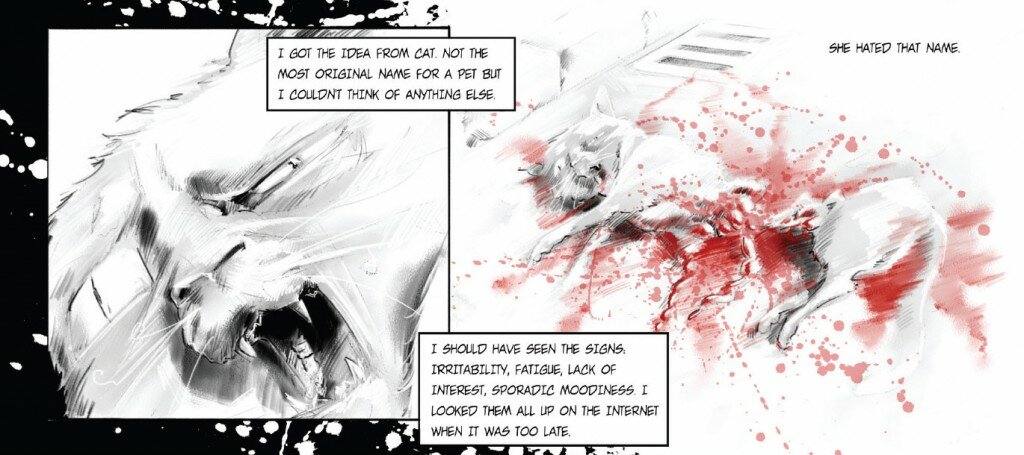
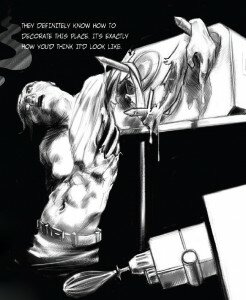
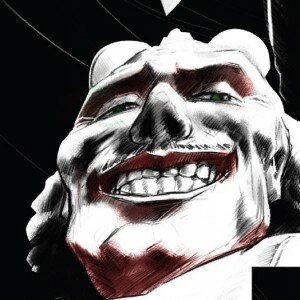
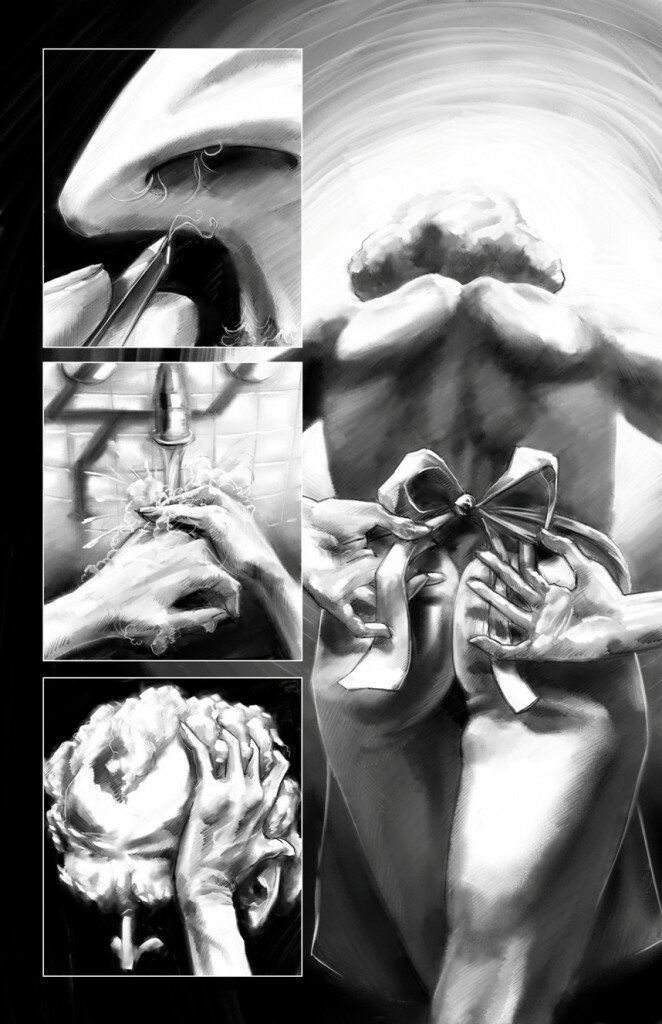
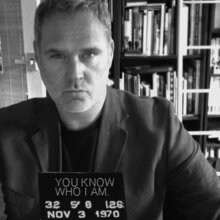

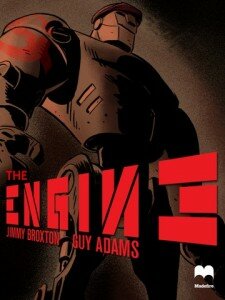
 I know you are no stranger in the Kickstarter territory. The first „we do not speak of” but the second one with Jimmy Palmiotti, Sex and Violence is slowly coming to fruition. Can you tell us about it and what you think of crowd-funding itself?
I know you are no stranger in the Kickstarter territory. The first „we do not speak of” but the second one with Jimmy Palmiotti, Sex and Violence is slowly coming to fruition. Can you tell us about it and what you think of crowd-funding itself?